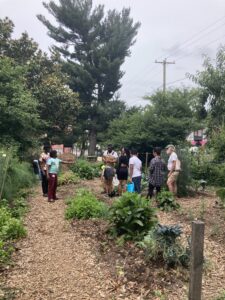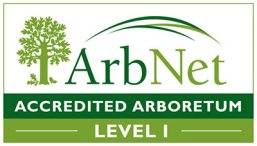
On Thanksgiving, we think about the help that the Wampanoag tribe of present-day Massachusetts offered to the recently arrived English settlers in 1621. The harvest that the group ate that year wouldn’t have been possible without that help. Farming techniques and crops from England didn’t work in the new environment. Local agricultural techniques taught to them by local residents helped them learn to live off of their new land.
When we were designing our urban gardens, we decided to include a space for original Native American crops. This way, we and all our garden helpers learn about the history of people living from our piece of land.
North Philadelphia was part of the Lenni Lenape Nation, a confederation of villages which included Western Connecticut, South Eastern New York (and Manhattan), all of New Jersey, and Northern Delaware. Each group functioned largely independently, but shared a language and culture. This nation is also known as the Delaware.
Like the Wampanoag, the Lenni Lenape were an agricultural society that also incorporated hunting and fishing. So what would they have been eating in the autumn of 1621?
Lenni Lenape Agriculture and The Three Sisters
The Europeans were largely unaware that the Native Americans they encountered in this region had a healthily thriving farming economy. As Native American Roots notes, “The crops were tended by the women and were not planted in fields which were fenced. Thus, Indian agriculture was often invisible to the English who assumed that agriculture was men’s work and had to be done in fenced fields.”
The Lenni Lenape’s major farming staples were corn, winter squash, and climbing beans. This group is called “The Three Sisters”, and was a very popular combination across the Americas (and particularly in the North East).
Planting these three crops together provides for a naturally fertilizing and pest-resistant garden. Nutritionally, they represent a balanced diet with all of the necessary amino acids.
Along with these essentials, they also grew sunflowers, pumpkins, tobacco, and herbs.
Lenni Lenape Hunting, Fishing, and Gathering
Along with agriculture, the Lenni Lenape also took in large amounts of fish, game and wild plants to complete their food sources.
The women, along with farming, were responsible for gathering wild plants like nuts, berries, mushrooms, and greens.
The men, who also cleared land and built buildings, were responsible for trapping or hunting animals. In Philadelphia, the Schuykil and Delaware rivers provided fresh water mussels, herring, shad, salmon, and sturgeon. From the forests, deer, elk, black bear, rabbits, birds, and other wildlife would have been hunted on an as-needed basis.
Historic Fair Hill’s Lenni Lenape Garden
This month, we finished the work of closing all our gardens for the summer. But we’ll be starting all our gardens up again in spring, and volunteers and visitors are always welcome. Check back in — we hope to see you there!
Resources
Wikipedia: The Three Sisters
Native American Heritage Programs: Lenape Food
Delaware Tribe: Foods of the Lenape
Native American Roots: Lenape Culture







